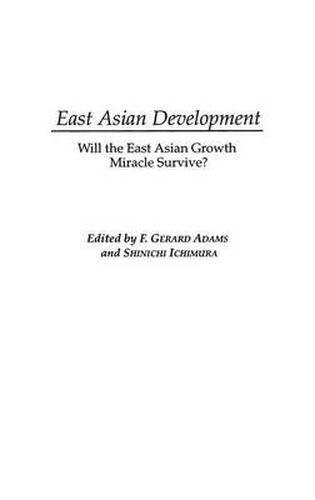Readings Newsletter
Become a Readings Member to make your shopping experience even easier.
Sign in or sign up for free!
You’re not far away from qualifying for FREE standard shipping within Australia
You’ve qualified for FREE standard shipping within Australia
The cart is loading…






East Asia’s rapid economic growth and the crisis of 1997 have caught the world’s attention. As the Asian miracle has turned to meltdown, the critical question has become whether growth will resume. Based on research and conferences at ICSEAD in Kitakyushu, Japan, this book brings together the work of Asian economic development experts. It considers the forces behind the East Asian growth miracle, the process of growth, the effect of saving, and the effect of foreign direct investment and multinationals. Taking an optimistic view, the authors conclude that rapid growth may resume in East Asia once the crisis has been resolved.
The authors argue that a growth process links East Asian countries to each other and to the industrial world, and that growth reflects a process that combines capital formation and technical and institutional change. The 1997 crisis grew out of excessively rapid boom and must be handled before growth will resume. But, the authors conclude, once the crisis has been resolved, the linked process of growth supported by appropriate policies, high levels of savings and investment, and foreign investment will allow growth to resume, although perhaps with a different geographic center of gravity.
$9.00 standard shipping within Australia
FREE standard shipping within Australia for orders over $100.00
Express & International shipping calculated at checkout
East Asia’s rapid economic growth and the crisis of 1997 have caught the world’s attention. As the Asian miracle has turned to meltdown, the critical question has become whether growth will resume. Based on research and conferences at ICSEAD in Kitakyushu, Japan, this book brings together the work of Asian economic development experts. It considers the forces behind the East Asian growth miracle, the process of growth, the effect of saving, and the effect of foreign direct investment and multinationals. Taking an optimistic view, the authors conclude that rapid growth may resume in East Asia once the crisis has been resolved.
The authors argue that a growth process links East Asian countries to each other and to the industrial world, and that growth reflects a process that combines capital formation and technical and institutional change. The 1997 crisis grew out of excessively rapid boom and must be handled before growth will resume. But, the authors conclude, once the crisis has been resolved, the linked process of growth supported by appropriate policies, high levels of savings and investment, and foreign investment will allow growth to resume, although perhaps with a different geographic center of gravity.